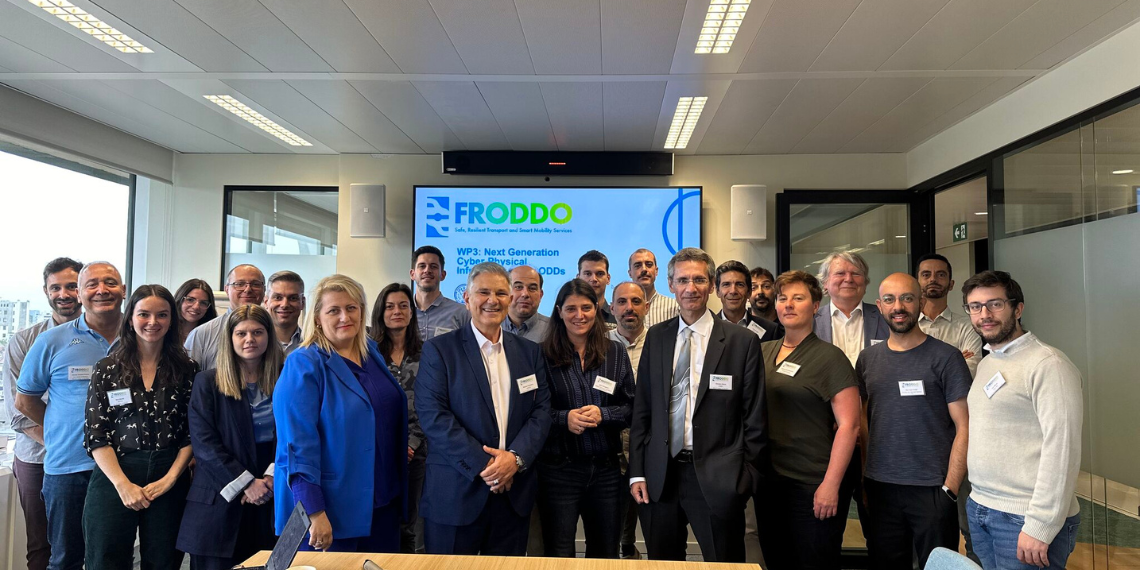FRODDO – this is the name of the project that will improve the safety and robustness of autonomous and connected systems, e.g., self-driving cars, through the development and testing of technological solutions, thus supporting user-centred mobility. INESC TEC is one of the partners of this European project, with a funding of almost six million euros, under the Horizon Europe programme.
Self-driving cars are designed to operate without a driver, but only under a set of vital conditions, which may impose a greater or lesser limitation on traffic to ensure safety. These are called Operational Design Domains – ODD.
Speed limits are one of the examples of said restrictions to automated vehicles, according to ODD – a set of operating conditions of autonomous systems, established by the manufacturers to ensure that a given vehicle runs safely in specific environments. However, ODD seem to limit the use of said cars; in this sense, FRODDO aims to develop a technology to increase the adaptability and sustainability of these standards.
This project, featuring INESC TEC, foresees the development of different solutions – namely, a federated digital twin infrastructure, supported by reliable Artificial Intelligence (AI) – to increase the adaptability and sustainability of the ODD, and contribute to their continuity. “We will develop and test a set of methods and tools – based on the design principles of secure systems – in a federated digital twin environment, improving the use of advanced sensing and AI that can be explained and supervised by humans,” stated Hugo Paredes, researcher at INESC TEC.
But how do you make ODD adaptable and sustainable? The FRODDO project will focus mainly on three main challenges: the availability of real-time data; the accuracy of positioning, navigation and timing; safe navigation and the efficient management of areas enabled for cooperative, connected and autonomous mobility (CCAM), with unconventional geometries and traffic conditions. Secure and reliable data sharing mechanisms will also be considered.
The project will feature four pilots. “We will develop a multimodal interface for users of autonomous vehicles; a prototype for positioning, navigation and timing for traffic management and a simulation platform for the unification of a Positioning-Navigation-Timing (PNT) structure to support future ODD of autonomous vehicles and to improve traffic conditions; a prototype to detect and act according to objects and events; and a PNT prototype with local positioning, traffic management rules and safety standards for fleets of autonomous trailer vehicles.”
According to Hugo Paredes, INESC TEC’s experience in human-centred computing and data science will allow the consortium to develop innovative AI technologies. “Our goal is to ensure that system users are able to interact, whenever necessary, with the data flows and information of the digital twin, reducing the risks associated with decisions made by algorithms that may be unfeasible, partial and even misleading.”
These solutions can benefit all agents part of CCAM, both at regional and national levels – and even globally. “Other industry sectors can replicate the technology we propose to develop within the scope of FRODDO. With the development of federated, AI-assisted digital twins, we seek to contribute to continuous and adaptable data flows, and reliable and secure ODD solutions.” The researcher also mentioned that this technology will quantify the risks associated with the CCAM sector and design strategies for traffic management, aiming at safety and contributing to efficient autonomous and connected navigation, even in extreme road conditions.
FRODDO brings together 18 entities from 10 European countries and is funded by the European Commission’s Horizon Europe Programme.
The researcher mentioned in this news piece is associated with INESC TEC and UTAD.



 News, current topics, curiosities and so much more about INESC TEC and its community!
News, current topics, curiosities and so much more about INESC TEC and its community!